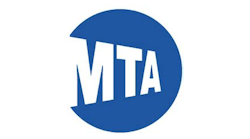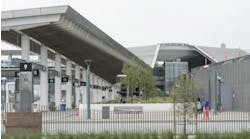Work to Start on First Three New York Stations in $72M Station Modernization Project
The R line stations, along 4th Avenue in Brooklyn, will close in both directions for renovations using a single-contractor design-build method to cut construction time and save money. The awarding of the $72.1 million contract to Citnalta-Forte Joint Venture in late 2016 started the clock on the extensive renovations planned for the Prospect Av, Bay Ridge Av and 53 St R stations.
Governor Andrew M. Cuomo has directed the MTA to use design-build procurement for these renovations, the first time that NYC Transit is using this method for delivering construction projects. Previously NYC Transit made station component repairs using a piecemeal method that allowed limited service at affected stations but stretched the construction timeline, often to several years. The process and success of using these new innovative construction methods will inform future projects planned for Long Island Rail Road and Metro-North Railroad.
“These first three stations to be renovated represent the start of a new age for our subway system. By using the design-build method, we are putting the onus on one contractor to get the work done seamlessly and on time,” said MTA Interim Executive Director Ronnie Hakim. “The emphasis is on giving them complete access to the stations and the ability to get in, get done and get out as quickly as possible. We specifically sought out companies that have worldwide experience with building infrastructure and transportation projects, and we expect them to put the best industry practices to use here.”
For the station modernization project, the MTA worked with consultants Grimshaw Architects to study and revise existing design guidelines for stations and facilities, with a focus on identifying ways to improve their appearance, usage, wayfinding and the flow of foot traffic. These revised guidelines will change the way that subway stations look and feel going forward and establish the new look of subway stations, influencing station design long after this major renovation project is complete.
Stations will be closed for construction for six months each.
The 53 St Station will close for service in both directions on March 27; the Bay Ridge Av station is scheduled to close on April 29 for six months; and the Prospect Av station is scheduled to close on June 5 for six months. During the closures, customers for all three affected stations are encouraged to use nearby subway stations, the B37 bus route or the B63 route, which run on Third and Fifth avenues run parallel to the R line in the area.
These three stations on the R line opened in 1915 as part of the Brooklyn-Manhattan Transit Corporation and will require major demolition work before extensive renovations can begin. In advance of station closures, customers may see necessary preparation work on the street level near stations or at station exits. The renovations for all three stations include infrastructure work such as concrete and steel repairs; new platform edges; waterproofing; upgraded electrical and communications systems; track wall and platform wall repairs; new granite flooring; new stair finishes; glass barriers in station mezzanines; new LED lighting; and improved station signage.
Station entrances:
All entrances will be refurbished and receive new handrails, stair treads, wall tiles, totems and digital screens providing real-time service information at the street level before customers enter the station. Canopies will be installed at select key entrances.
Turnstile areas:
Walls and ceilings will be repaired, and new granite flooring, informational dashboards and glass barriers will be installed.
Mezzanines and platforms: LED light fixtures for brighter, more secure areas will be installed, along with security cameras and Help Points. Digital screens for real-time arrival information, updated service information and advertising will be installed. Customer amenities include new station art; electronics charging stations built into station furnishings; new platform edges, and new benches and leaning bars.
Once all stations are renovated, they will have Wi-Fi and cellular connectivity, intuitive wayfinding, and top-to-bottom renovations of every station component that customers see or use on their daily commutes. Closures of each station are limited to six months at a time, and renovations for all stations in the project are expected to be complete by 2020.
The station modernization project is part of the Governor’s robust package of enhancements and capital investments to improve the reliability, capacity and reputation of the subway system. The MTA has continued to move forward with the renovation project and expects to soon issue an RFP for the second group of stations that include the Broadway, 30 Av, 36 Av, and 39 Av stations on the Astoria-Ditmars Blvd line in Queens.

